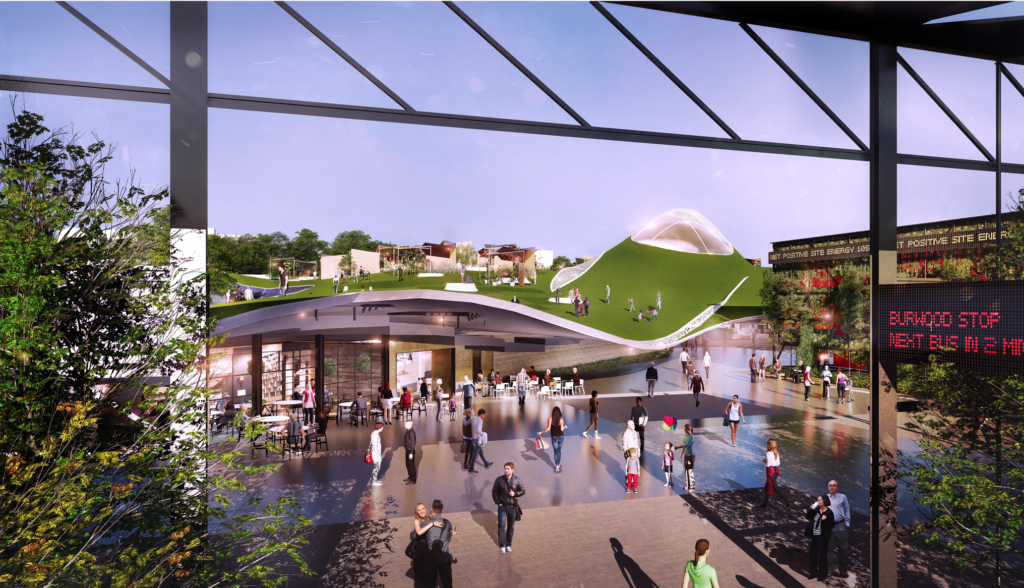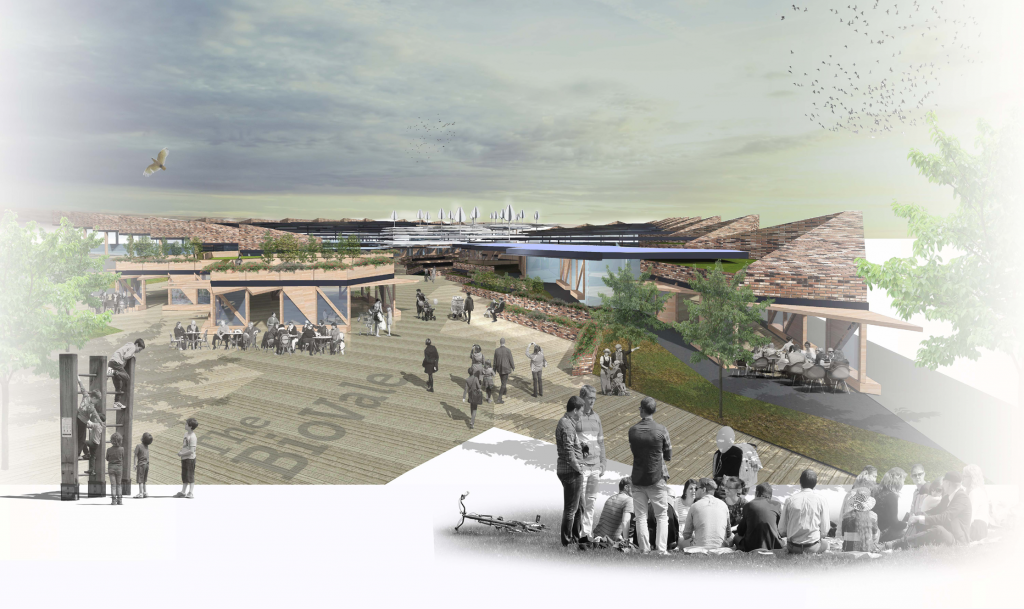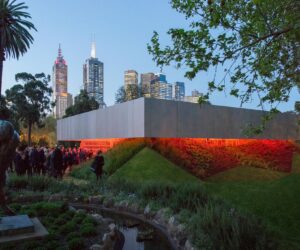Living Building Challenge
The challenge was to envisage what the world’s most sustainable retail centre looks like and three of the most imaginative ideas included a centre designed as a “lush river valley”, one using “Passive House” principles with “outdoor working pods”, and a pre-fabricated construction model to minimise waste for potential re-purposing down the track.
“Imaginative” because they best captured the imaginations of the attendees of the recent Living Future unConference held in Seattle, where submissions for the Brickworks Living Building Challenge design competition were displayed for the first time.
More than 1,000 people could vote for their favourite submission over the course of the three-day conference, with the three most popular designs titled The Biovale, The Difference is Living and For the Common Good.
The Brickworks Living Building Challenge design competition is coordinated by the Living Future Institute of Australia (LFIA), the local arm of the International Living Future Institute. Frasers Property Australia is the Principal Partner for the design competition and the company’s Brickworks shopping centre site in Melbourne is the subject of the competition.
The People’s Choice Award will be a key feature of the Brickworks Living Building Challenge design competition major awards night to be held on June 16 in Melbourne. The People’s Choice Award winner will be announced before the overall competition winner is crowned.
LFIA Vice-Chair Stephen Choi was in Seattle for the conference – or “unConference” as it was dubbed due to its inclusive, workshop oriented design – and said the submissions captured the attention of developers, designers, architects, sustainability professionals and other built environment experts from all over the world.
“The Brickworks Living Building Challenge design competition posed a fairly open-ended question with the potential to be interpreted in myriad ways to elicit a diversity of submissions. It succeeded: the quality and breadth of ideas for our judges to comb through showcase some interesting thinking that we’ve never seen realised in an existing retail centre anywhere in the world,” Mr Choi said.
“Buildings that generate more energy than they consume, that clean as much water as they use, those made completely of non-toxic materials and those with site ratios dedicated to urban agriculture are just some of the progressive designs we received.
“It was particularly satisfying to receive positive feedback from some of the world’s pre-eminent and creative sustainability minds on the possibilities for a shopping centre planned for suburban Melbourne.
“The success of the design competition reinforces the importance for Australia to participate in the global conversation when it comes to progressing a new living future for a sector which has previously lagged in terms of sustainability,” Mr Choi said.
The finalists for the Brickworks Living Building Challenge design competition People’s Choice Award, to be announced on June 16 at the Melbourne School of Design, are:
The Biovale Consortium: DesignInc Melbourne, WSP | Parsons Brinckerhoff, Outlines Landscape Architects, MEnD.
Centred around the theme of a lush river valley, this design proposes a unique and naturally pleasant space to be in, tapping into the region’s historical connection to the Red Williams Pear by using its cross section as inspiration for a floating cloud roof structure, providing shade and reflecting excessive heat and light. Educational signage around the centre will enable customers to appreciate the experience.
The Difference is Living: DWP Suters, Aurecon, CJ Arms, Reed Bed Technology, Eco Harvest, Biomimicry Australia, Future Food, WATPAC.
Using modular pre-fabricated construction, this design significantly reduces construction waste compared to a standard retail centre. It has the added benefit of versatility at the end of its life, as it is able to be re-purposed – potentially to do the same job elsewhere – because its structure is essentially “screwed together instead of glued together”. Further, this design recognises an innate connection to natural elements amongst humans; the connection that human beings subconsciously seek with the rest of life.
For the Common Good – A Restart to Retailing: Buchan Group, Grun, Inhabit, Rushwright Associates.
This proposed shopping centre utilises Passive House principles throughout, providing both thermal comfort and indoor environment quality with a highly efficient envelope and building services. Natural ventilation is used wherever viable. The design activates space for purposes outside of retail too, with elements such as outdoor working pods fitted with power points and WiFi complemented by public art installations.
For further information visit www.living-future.org.au





